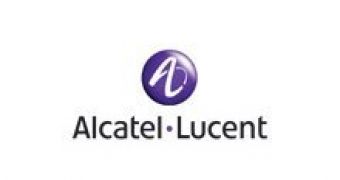Alcatel-Lucent is performing for the first time in Germany a demonstration of the new DVB-SH mobile broadcast standard using the S-Band. Taking place in Alcatel-Lucent's premises in Stuttgart, the demonstration shows how a single device can access a range of Mobile TV channels delivered via 3G or broadcast networks.
Thanks to Alcatel-Lucent's Mobile interactive TV solution, users are also able to interact with the content of all the 3G and broadcast Mobile TV channels available on the terminal. This achievement is opening the way to an interactive and personalized Mobile TV experience for the mass market and to the provisioning of new services offered as a complement to Mobile TV, such as voting, content downloading or mobile commerce. These features also enable the delivery of personalized advertisements to mobile TV viewers.
Olivier Coste, President of Alcatel-Lucent's Mobile broadcast activities, declared: "Germany is a key market for the roll-out of mass market Mobile TV in Europe. Following the adoption during 3GSM of DVB-SH by DVB Project and the EC Decision on the use of a harmonized 2.2 GHz spectrum for EU-wide hybrid Mobile TV services, our Stuttgart's demonstration definitely positions Alcatel-Lucent's Unlimited Mobile TV solution as a serious option for all operators willing to deploy their Mobile TV strategies in Europe."
Alcatel-Lucent's "Unlimited Mobile TV" solution is based on the new DVB-SH (Satellite services to Handhelds) Mobile TV standard. It provides a combination of an unlimited number of unicast 3G-based Mobile TV channels with up to 90 broadcast Mobile TV channels in the S-Band (2.2 GHz) at 256kb/s. This solution is well-fitted to mass market Mobile TV as it can provide mobile users with a high-quality Mobile TV service wherever they are, outdoor or inside buildings, at the scale of one or several countries. The solution is compatible with 3G mobile telephony, extensively reusing existing cellular networks (sites, antennas and base stations); and is being developed by Alcatel-Lucent together with several industrial partners including Archos, DiBcom, NXP, Sagem Communication, Samsung Electronics, TeamCast and UDcast.

 14 DAY TRIAL //
14 DAY TRIAL //